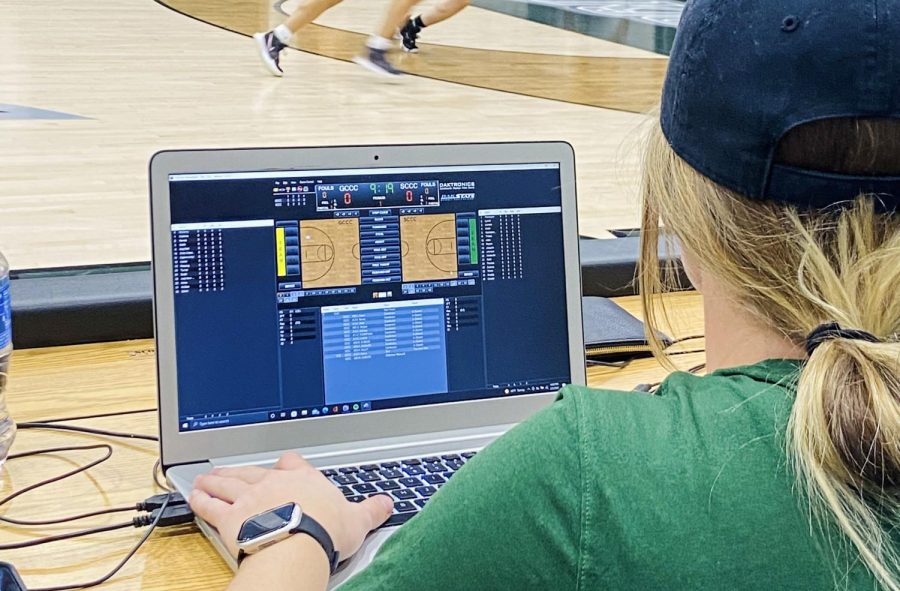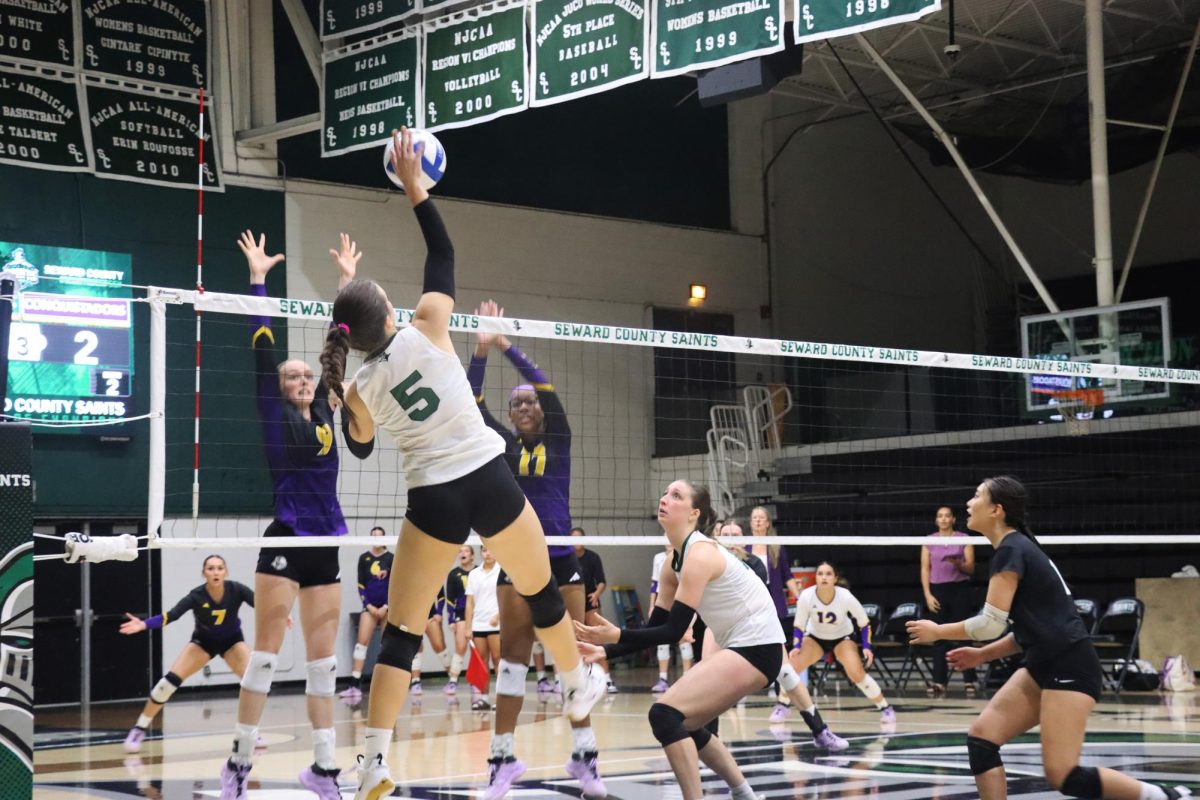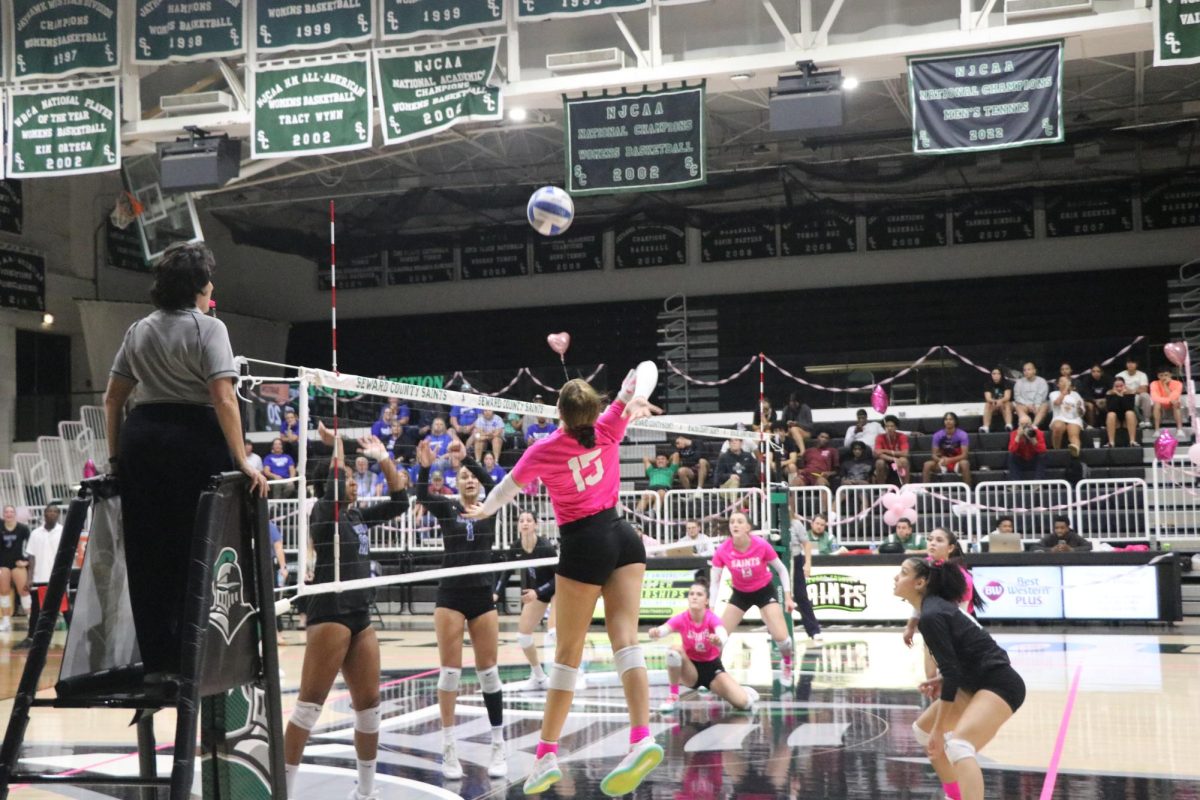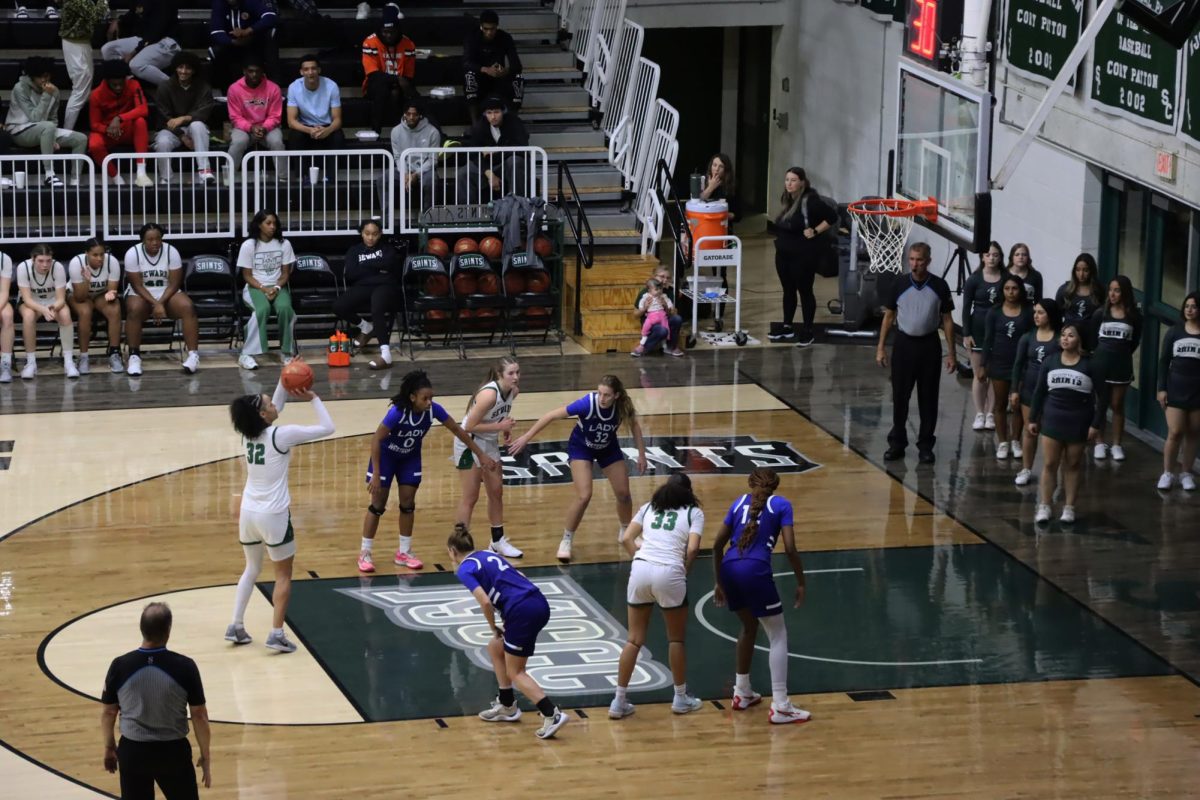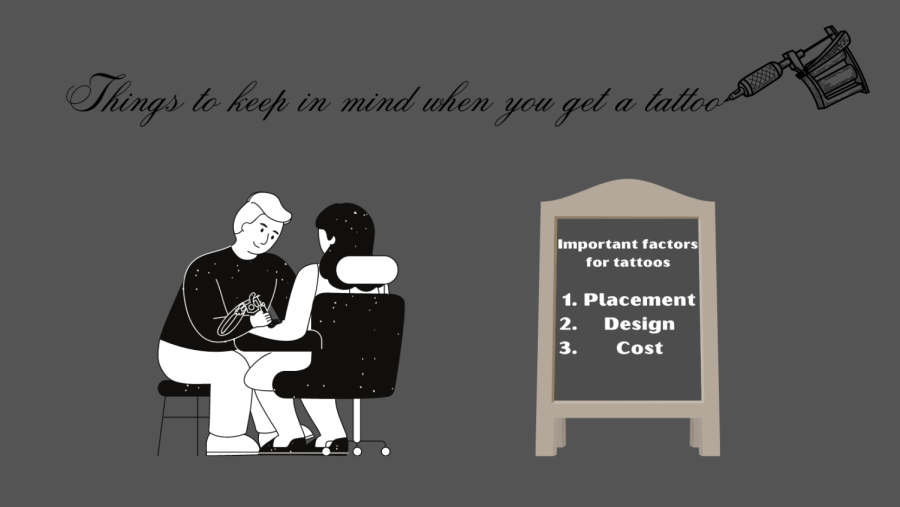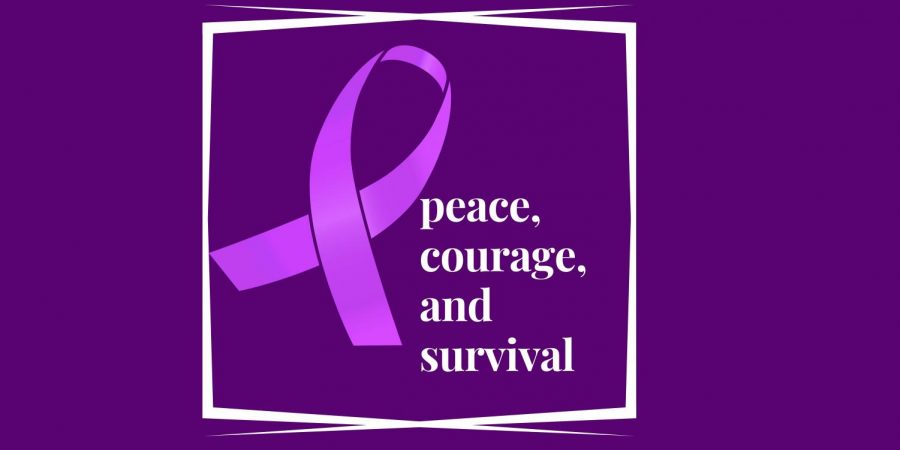Know the warning signs of domestic violence
November 8, 2021
People who want to show support to survivors of domestic violence wear the color purple— it’s a symbol of peace, courage, survival, honor and dedication.
Domestic violence affects a lot of people and does not discriminate against age, gender, race, religion or sexual orientation and it comes in different forms such as physiological abuse, physical abuse and controlling behavior. The results vary from physical harm, psychological trauma, and in some cases death.
Maria Munoz with the Liberal Area Rape Crisis and Domestic Violence Services said there are some red flags to look out for in domestic violence. This may include isolation from family and friends and also a change in character and appearance.
“Victims constantly excuse bruises stating they hurt themselves,” Munoz said, noting that victims might change their style of dress to hide some of this. “Their self-esteem decreases when approached by a family or friend. The victim will often deny the abuse and shut themselves down.”
Students might feel the need to give a helping hand to someone experiencing domestic violence but the most effective way would be to take them to someone like Munoz. Professionals know to never advise victims without hearing their entire story and to listen in a non-judgemental way.
Munoz knows friends will naturally reach out to each other before seeking professional help and offers tips on how to handle the situation.
“Students can help a victim by listening to their emotions. Be considerate that not everyone reacts the same way. Let them know in your opinion that it may be unhealthy. Always let them make their decisions, even if you think it is not the best. Refer them to a Domestic Violence Agency. Emphasize that these organizations are confidential,” Munoz said.
Annette P. Hackbarth-Onson, dean of student success and enrollment at Seward County Community College, said domestic violence is more common than people think. However, the number of cases on campus, to her knowledge, is very small and occurs at most once a year.
“We do all we can to help and we follow the needs of the students,” said Hackbarth-Onson, “but it is really hard because you never really know what’s going on and don’t want to assume anything.”
According to www.nctsn.org, an average of 20 people are abused by their significant other every minute. One main question asked by people who have never experienced domestic violence is “Why don’t they just leave the person?” but they don’t understand that the victim is so broken down that they believe there is no way out of the situation and they are scared to leave.
Domestic violence also has an effect on the members of the household. Children in homes where domestic violence is present have shown negative effects on their emotional well-being, social and academic functioning. This means that they tend to keep a low profile, their grades begin to decline or they lose interest in daily activities that they used to enjoy. These effects tend to be long-lasting.
If you or someone you suspect is going through domestic violence reach out to Liberal Area Rape Crisis and Domestic Violence Services. Their number is (620)-624-8818.



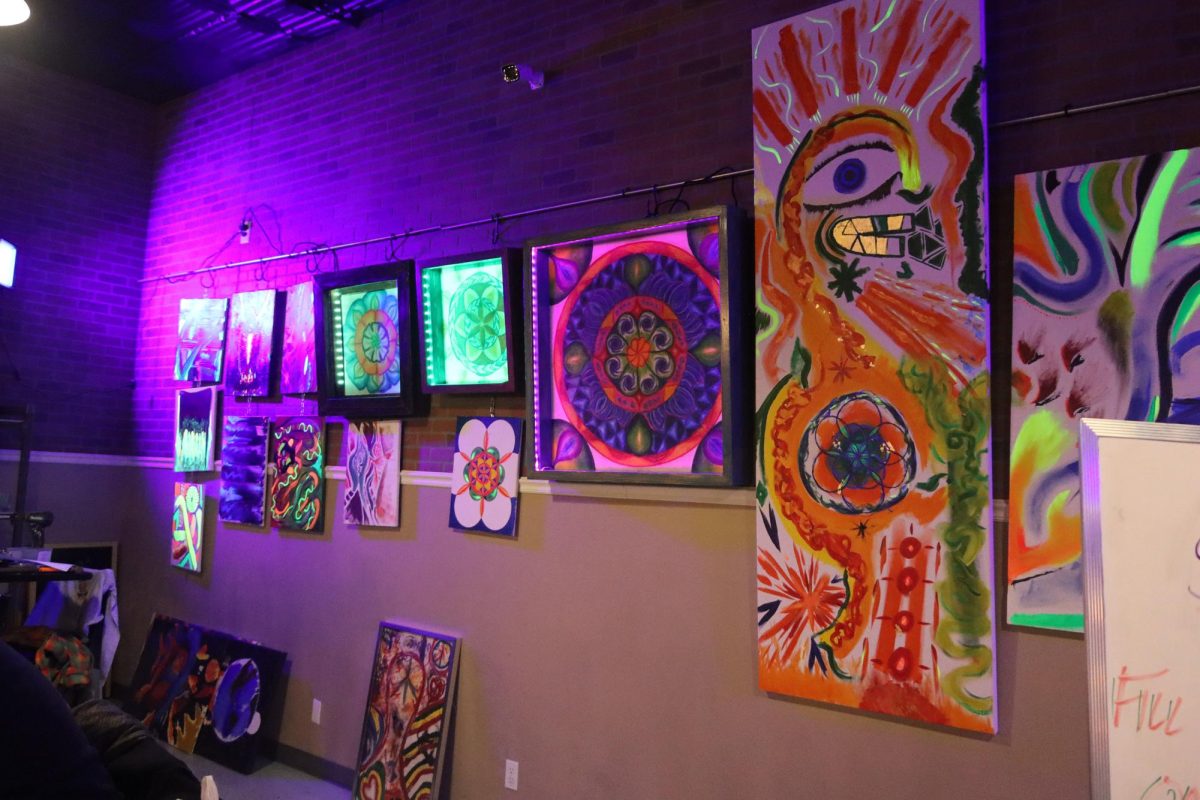


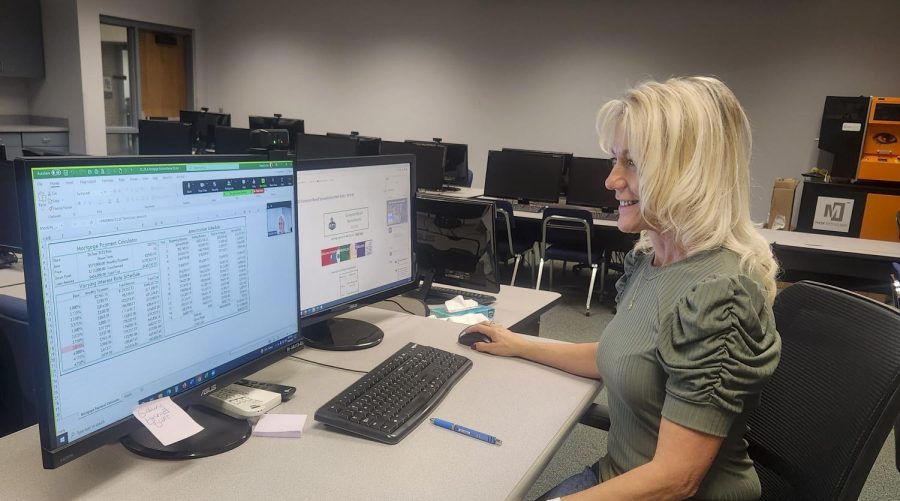







![The sophomores were recognized on the field instead of walking across the stage during their doubleheader. They received their diplomas and a picture of themselves playing during their career at Seward. [Pictured left to right are Dylan Day, Reed Thomas, Jase Schneider, Mason Martinez, Gannon Hardin, Brody Boisvert, and Zach Walker]](https://crusadernews.com/wp-content/uploads/2022/05/WEBDSC_0275-900x454.jpg)




